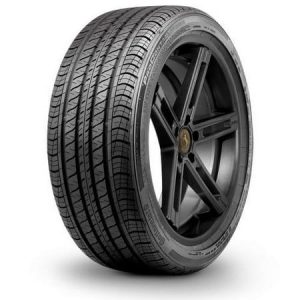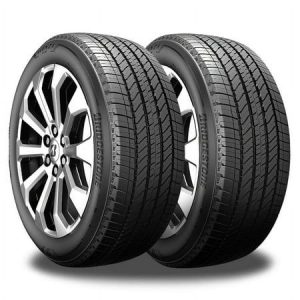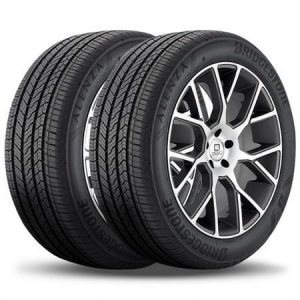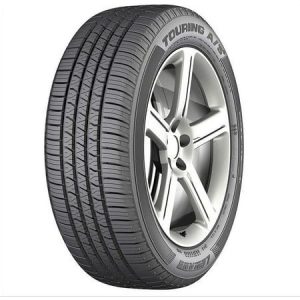Ever wondered what those black rings wrapped around your car’s wheels are called? They’re passenger tires, and they’re a crucial part of your vehicle’s performance and safety. But with so many options on the market, understanding passenger tires and choosing the right ones can feel overwhelming. Don’t worry, this comprehensive guide will equip you with all the knowledge you need to navigate the world of passenger tires.
Unveiling the Magic of Passenger Tires
Passenger tires are specifically designed for everyday vehicles like sedans, coupes, hatchbacks, crossovers, and even some lighter SUVs and trucks. Their primary function is to provide a comfortable, quiet ride while maintaining optimal grip on the road.
Here’s a breakdown of their key components:

- Tread: The outer layer of the tire that comes into direct contact with the road surface. Tread patterns are designed to channel water for wet weather traction and provide grip for braking and cornering.
- Sidewall: The flexible area that connects the tread to the internal structure. It houses information like tire size, speed rating, and load capacity.
- Belts: Steel belts reinforce the tire, providing strength and stability.
- Inner Liner: An airtight layer that holds the air pressure inside the tire.
Decoding Passenger Tire Terminology: Understanding Sidewall Markings
The sidewall of your passenger tire is a treasure trove of information. Here’s how to decipher the cryptic codes you’ll find there:
- Size: This typically follows a format like P225/55R17. Here’s a breakdown:
- P – Denotes a passenger tire.
- 225 – Section width of the tire in millimeters.
- 55 – Aspect ratio (height of the sidewall as a percentage of the section width).
- R – Indicates radial construction (most common type).
- 17 – Rim diameter in inches.
- Speed Rating: This is a letter code (e.g., H, V, W) that indicates the maximum speed the tire is designed to handle.
- Load Index: A number representing the maximum weight a single tire can safely support.
Refer to your vehicle’s owner’s manual for the recommended tire size and specifications.
Unveiling the Different Types of Passenger Tires: Choosing the Right Fit
Passenger tires come in various flavors, each catering to specific driving conditions and needs. Here’s a breakdown of the most common types:

- All-Season Tires: The most popular choice, offering a good balance of performance in dry, wet, and light winter conditions.
- Summer Tires: Prioritize dry weather performance with increased grip and handling. Not suitable for cold or snowy conditions.
- Winter Tires: Designed for superior traction in snow and ice, featuring deeper treads and softer rubber compounds for increased flexibility in cold temperatures.
- Performance Tires: High-performance tires prioritize handling and responsiveness, often featuring lower treadwear for increased grip.
- Touring Tires: Engineered for long highway journeys, offering a balance between comfort, wear resistance, and all-weather capability.
Demystifying Treadwear Ratings: Ensuring Long-Lasting Performance
Treadwear ratings provide an indicator of a tire’s expected lifespan. A higher treadwear rating signifies a tire that will last longer under normal driving conditions. However, it’s important to remember that treadwear is just one factor affecting tire life. Aggressive driving habits, improper inflation, and road conditions can all contribute to faster wear.
Tire Maintenance Essentials: Keeping Your Passenger Tires in Top Shape
- Regular Inspections: Visually inspect your tires for any signs of damage, wear, or uneven tread wear patterns.
- Maintain Proper Inflation: Check your tire pressure regularly (including the spare) using a reliable pressure gauge. Refer to the recommended inflation pressure on the vehicle door placard or owner’s manual.
- Rotate Your Tires: Regularly rotate your tires to ensure even wear and extend their lifespan. Consult your vehicle’s owner’s manual for the recommended rotation schedule.
- Alignment Checks: Uneven tire wear can be a sign of misalignment. Get your wheels aligned periodically to prevent premature wear and tear.
Conquering the Road with Confidence: Selecting the Perfect Passenger Tires
Now that you understand the fundamentals of passenger tires, it’s time to delve into the selection process. Here are some key factors to consider:

- Driving Conditions: Consider your typical driving environment. Do you face harsh winters with snow and ice? Do you prioritize highway cruising or city driving? Choose tires designed for the conditions you encounter most frequently.
- Vehicle Type: Not all passenger tires are created equal. Ensure you select tires compatible with your specific vehicle’s weight and performance capabilities. Refer to your owner’s manual or consult a tire professional for guidance.
- Driving Style: Aggressive driving habits like frequent hard braking and cornering will lead to faster tire wear. Consider high-performance tires if you crave a sporty driving experience, but prioritize touring or all-season tires for a more relaxed driving style.
- Noise Comfort: Some tires generate more road noise than others. If a quiet ride is a priority, look for tires with noise-canceling features or a higher UTQG (Uniform Tire Quality Grade) traction rating, which indicates a quieter tire.
With a plethora of passenger tire brands vying for your attention, choosing the right one can be daunting. Here’s what to consider:
- Brand Reputation: Research established tire brands known for quality and performance. Consider factors like warranty coverage, customer reviews, and industry ratings.
- Tire Warranties: Most passenger tires come with a manufacturer’s warranty that covers defects in materials and workmanship. Pay attention to the warranty terms, including treadwear coverage (if offered).
- Price vs. Value: While budget is a factor, prioritize safety and performance over the cheapest option. Look for tires that offer a good balance of features, durability, and warranty coverage for your needs.
Utilize online tire retailer resources that allow you to filter tires based on your vehicle specifications, desired features, and budget.
Investing in Your Safety: The Value of Professional Tire Installation
Once you’ve selected the perfect passenger tires, ensure proper installation is crucial. Here’s why opting for professional installation is a wise decision:

- Safety: Proper mounting and balancing are essential for optimal tire performance and safety. Professionals have the expertise and equipment to ensure your tires are correctly mounted, balanced, and inflated.
- Expertise: Tire technicians can identify potential issues like uneven wear or hidden damage during the installation process.
- Convenience: Most tire retailers offer installation services, saving you time and effort. They can also dispose of your old tires responsibly.
The Road Ahead: Maintaining Your Passenger Tires for Optimal Performance
By following these simple maintenance practices, you can maximize the lifespan and performance of your passenger tires:

- Regular Inspections: Visually inspect your tires for signs of damage, wear, or uneven tread wear patterns at least once a month. Look for cuts, bulges, or foreign objects lodged in the tread.
- Maintain Proper Inflation: Improper tire pressure is a leading cause of premature tire wear and reduced fuel efficiency. Check your tire pressure regularly, including the spare, using a reliable pressure gauge.
- Tire Rotation: Regular tire rotation helps ensure even tread wear and extends the lifespan of your tires. Consult your vehicle’s owner’s manual for the recommended rotation schedule.
- Alignment Checks: Uneven tire wear can be a sign of misalignment. Get your wheels aligned periodically to prevent premature wear and tear.
By prioritizing proper tire maintenance, you’ll not only save money in the long run but also ensure a safe and enjoyable driving experience.
